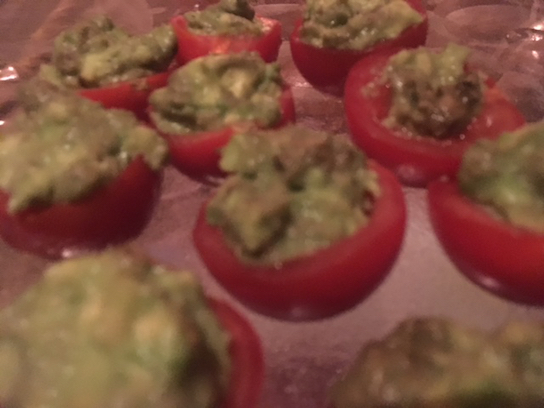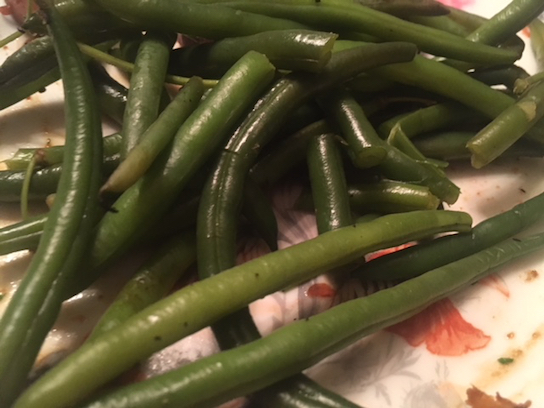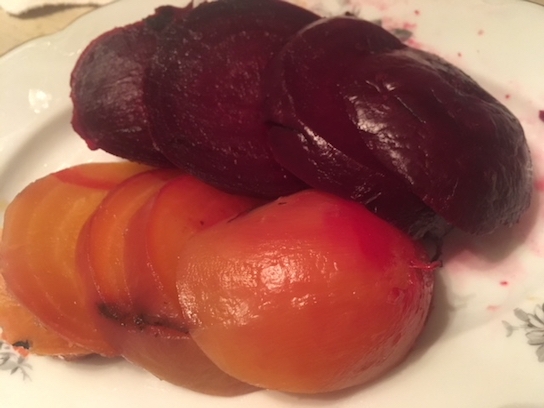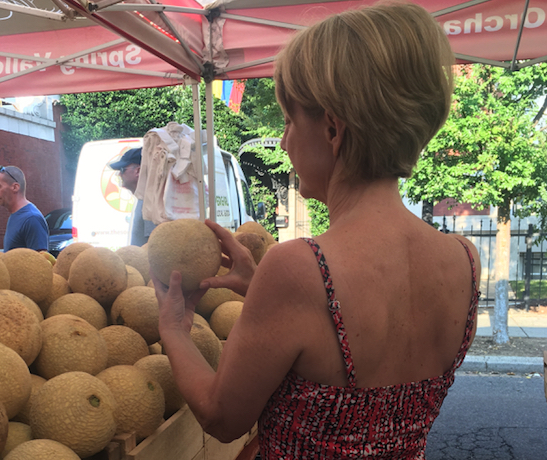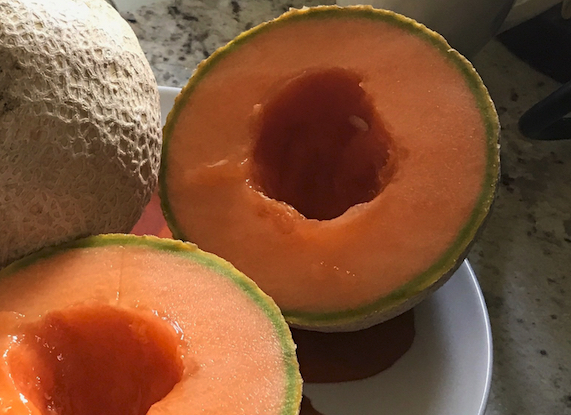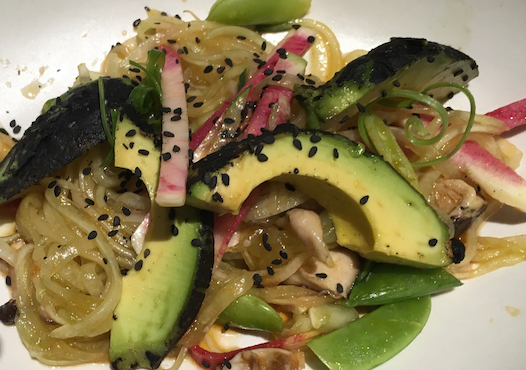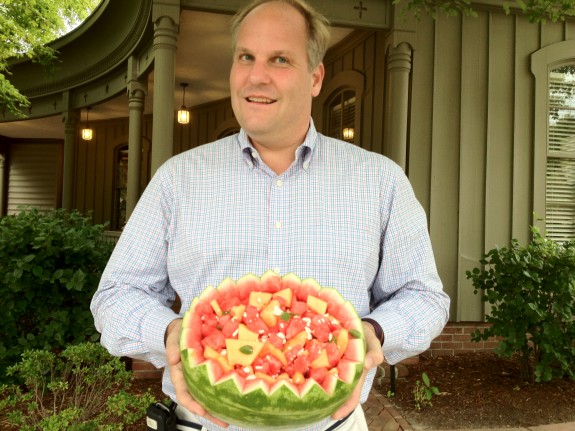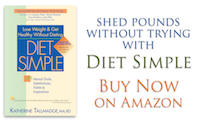Katherine’s Top 40 Healthy Holiday Tips – Listen to the Podcast!
- At December 19, 2017
- By Katherine
- In Articles, News
 0
0
Personalize your favorite strategies for enjoying yourself while staying healthy and fit through the holiday season. Listen to my “Top 40 Mental Tricks, Substitutions, Habits & Inspirations for the Holidays” on “The Boost” Podcast with Elena Lipson – and me!
The holidays are a time for celebrating life and for bringing friends and families together. They also mean many opportunities for socializing, eating and drinking. My belief is that you can do it all, have fun, feel great and still stay in shape and good health during the holidays with just a little planning and support. Besides, what’s the alternative?
Even if you’ve mastered your daily routine of self-care, the holidays present new challenges like travel, crazy schedules, fattening delicious foods everywhere, increased family and work obligations and pressures.
On the “The Boost Podcast,” I remind you, among other things, that you can eat with abandon, even your favorite holiday foods, like peppermint bark or potato pancakes, you can sleep more, reward yourself with sexy lingerie or a massage, go to great parties… In fact, you should!
Diet Simple Tip# 132 For Party Goer’s: The 25 Percent Blowout!
- At December 04, 2017
- By Katherine
- In Articles, News
 0
0
Here’s some rocket science: What happens when you go to four or five parties in a week, and you eat yourself silly at each one? You’ll make a good social impression, but the impression on the scale at the end of the week will be even more impressive.
It’s difficult for serious party goers to keep food intake and calories under control. Every sideboard and dining table is loaded with food, and every bottle is filled with caloric libations.
In Diet Simple’s Chapter, “The Party Goer’s Guide to Perfect Weight,” which is especially appropriate for party animals, anyone who entertains (or is entertained) frequently for pleasure or for business, or those who go home for the holidays, Tip #132, “The 25 Percent Blowout,” shares sage advice:
At the height of the holiday season, you might find yourself invited to four parties in a week. Go to all of them – and indulge at one.
**Excerpted from Diet Simple: 195 Mental Tricks, Substitutions, Habits & Inspirations
Tip# 139: Give Away Leftovers! 5 Ways to Stay Slim Through the Holidays
- At November 24, 2017
- By Katherine
- In Articles, News
 0
0
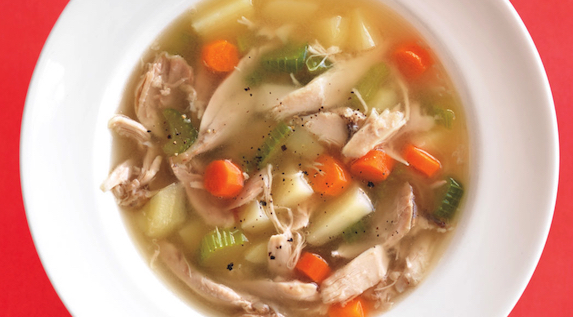
Goody’s Vegetable Soup (made with turkey stock and leftover Thanksgiving turkey) in “Diet Simple: 95 Tricks, Substitutions, Habits & Inspirations” A perfect way to enjoy the holidays and stay slim, too!
In tip#139 of Diet Simple, I share a little reminder that… it’s not the holiday meal that puts the weight on, it’s eating the high calorie leftovers again… and again… and again… on Friday… Saturday… Sunday…and beyond… Get rid of them (I’m pretty sure a homeless shelter would appreciate them)! But keep the tasty and healthy turkey, bones, and veggies to make a yummy soup that’ll soothe your loved ones’ souls – and bodies.
Splurging is great. but I recommend you get back to normal eating as soon as possible. Think of the Thanksgiving feast as one lovely day, and then, indulge yourself with the love of friends and family the rest of the weekend. Besides, isn’t love, friendship and thankfulness the most important parts of the holidays?
Soup is perfect for 5 reasons…
Soups are an especially good use for your leftovers. Why? They are satisfying in many ways: First, they are easy to throw together (as an example, Goody’s Vegetable Soup in “Diet Simple). Second, psychologically, soups warm your body and soul. Third, physically, they are yummy and filling, yet low in calories. Fourth, soups using Thanksgiving leftovers are brimming with nourishment from the most nutrient-dense foods available: veggies! And fifth, soups slow you down, calm you, help you eat more leisurely and mindfully. And mindfulness helps your body and mind in surprising ways.
I’ve written about the “Science of Slimming Soups,” in Diet Simple and on my blog, and you’ll be amazed at the results!
A Fall Menu for Guests with Dietary Food Restrictions

Butternut Squash Soup with Curry and Ginger – from “Diet Simple Farm to Table Recipes: 50 New Reasons to Cook in Season!” (squash, onions and ginger from Farmers Market)
Cooking for special guests with food restrictions can seem an ominous task. It often means that none of your favorite special occasion recipes work, risking disappointing your guests with a less than delcious meal.
I was recently faced with entertaining a friend who couldn’t eat grains, starch, sugar, dairy, eggs, legumes, peanuts, almonds, garlic, or alcohol … You get the picture! But my friends said I did it well, so I thought I would share my menu with you.
First, since my food choices were limited, the recipes were likely going to be fairly simple. so choosing the best ingredients was paramount. Obviously, that meant I bought just about everything from the local Farmers Market.
As Hors d’oevres, I served Guacamole Stuffed Cherry Tomato Halves. On most diets, vegetables are unlimited, so you can’t go wrong with them. My quacamole was simply mashed avocado with salt and pepper. You can stuff the cherry tomato halves with anything – tuna or smoked salmon salad, tabouleh, etc. I also served pistachio nuts in a side dish (always with a spoon to prevent spreading germs).
As the first course, I served Butternut Squash Soup with Curry and Ginger, always a hit. I created this recipe years ago, because I couldn’t find a butternut squash soup recipe with no cream. Of course, this made it perfect for this special menu. All I had to do was to excluded the garlic.
As the main course, I served a crab cake, topped with a tiger shrimp and 2 scallops as decoration. All bought that day from Stachowski’s in Georgetown. The guests were overwhelmed with the freshness, sweetness and delicacy of the seafood. And I confirmed that nothing in the crabcake was verboten. With most of these diets, protein is not limited, but I chose seafood to be on the healthier side. My side dishes were Haricot Vert sauteed in olive oil with sweet onions and red peppers.
And for color, golden and red beets simply boiled with salt and sliced, were served alongside.
Of course, I really wanted dessert to be special. But I was limited to fruit. Hmmm… I’ve eaten roasted fruit, like apricots and peaches, and sauteed fruit in butter and brown sugar. The butter and brown sugar were out, so I decided to roast fruit, which I had never done before. I looked up a few recipes, found fresh pineapple and fresh figs at the grocery store and thought long and hard about what I could roast them in. Could they be roasted alone? I couldn’t find any recipe this simple and I was afraid to try it. It seemed that the fruit would need some kind of fat and sweetener to make it special. But I couldn’t use butter or sugar. Instead, I chose coconut milk, hazelnut oil, and a little honey. I tossed the fresh pineapple pieces and fig halves, in a bowl with the mixture, added pecans, and placed them on a cookie sheet with parchment paper (nothing sticks to it). Roasted til the pineapple was golden brown.
But that wasn’t enough. I needed something creamy with it… ice cream or whipped cream were out of the question. But I heard that coconut milk was popular with the alternative dieting crowd (even though it riases bad cholesterol more than anything else!), so I looked up how to make something creamy out of it. Turns out, it gets nice and fluffy when whipped with a beater. I served it alongside the fruit. And it was a hit!
With a willingness to experiment, try new recipes, and to please your friends who want to eat great food but may be on special diets, it’s worth it to take your cooking into a new direction. My dinner was probably hit and miss. But my friends appreciated my effort and I’m sure enjoyed at least most of it!
Yoga for Low Back Pain
- At September 28, 2017
- By Katherine
- In Articles, News
 0
0
“At least 80% of adults experience low back pain at some point in their lifetime… In a large survey, more than a quarter of adults experienced low back pain in the past 3 months,” according to the National Institutes of Health’s National Institute of Neurological Disorders and Stroke (NINDS).
“Recent studies in people with chronic low back pain suggest that a carefully adapted set of yoga poses may help reduce pain and improve function (the ability to walk and move). Studies also suggest that practicing yoga (as well as other forms of regular exercise) might have other health benefits such as reducing heart rate and blood pressure, and may also help relieve anxiety and depression,” according to a NCCIH article.
Yoga, meaning “unity” in Sanskrit, “unites a mind and body practice,” according to a National Institutes of Health National Center for Complementary and Integrated Health (NCCIH)
Yoga is believed to have originated in the 5th or 6th centuries BCE in India. But it didn’t become popular in the west until the 20th Century. Just twenty years ago, if you practiced yoga, you may have been skeptically regarded as a “hippie” or “a little too new age.” But today, there seems to be a yoga studio on every corner. In fact, it’s become so mainstream, that my physical therapist recommended yoga to me for healing from my particular knee and back surgeries of last year (I’ve been a practicioner for at least ten years), though I adapt poses to my individual needs, per her instructions (and which you should do per your doctor’s instructions).
I recommend yoga or any other mindfulness meditation practices for my clients when changing their lifestyle habits. It is a simple yet powerful tool that can help you transform your health and your life. The mindfulness you can experience with yoga (or other forms of meditation) can help you become more focused and clear, for concentration to be more sustained. It can help you handle emotional situations more effectively by improving decision making and reducing impulsivity, as I relate in my article, “Mindfulness in Eating and Living,” and I describe in my book, “Diet Simple.”
How to Pick the Best Cantaloupe and Delight Your Friends!
- At August 27, 2017
- By Katherine
- In Articles, News
 0
0
I’m not exaggerating! I think I’ve become the most popular person in the area and I credit it to a new variety of cantaloupe called Flavorburst. I buy them at the Dupont Circle Farmers Market on Sundays from Spring Valley Orchard and Farm in West Virginia. Perfectly sweet, juicy, and velvety in texture. Because of their thin skin, they pack more meat than a huge cantaloupe, and are only $2.00 each. I’ve shared them with neighbors, friends, colleagues, clients, and community organizations.
In fact, I get so many orders for them, I had to buy 20 last week (no one wants to get up early enough on a Sunday morning!). There are still 6 left on my windowsill from a week ago because I’ve perfected how to choose enough to last almost two weeks: ripe, medium ripe and unripe. This is how: An unripe Flavorburst Cantaloupe has a small, green circle at the top. Keep these on your windowsill or kitchen counter until their ripe.
A ripe cantaloupe, on the other hand, develops a larger, yellower circle, with tiny cracks, and smells cantaloupe-y. Slice it, serve and share it immediately, or place it in an airtight baggie in the refrigerator for a couple of days.
True Food: A Truly Delicious Experience for Healthy Foodies
- At August 22, 2017
- By Katherine
- In Articles, News
 0
0
I encourage my clients to explore new and delicous ways of enjoying food. In fact, in my weight loss or lifestyle transformation programs, all favorite food is included. Why? Because “taste” will always be the primary reason we humans are willing to eat something. Good tasting food kept us alive during evolution. Anything that tasted bad might have killed us! We still have that instinct today.
So, if a “diet” or “healthy” dish you’re eating isn’t delicious, or it’s something with which you’re getting bored, you won’t stick with your healthy lifestyle. Eating food that you love is the only sustainable way to live.
This brings me to my client, Noah Arber’s, story, as she told it to me …
“Katherine! I had an incredible dining experience at True Food Kitchen in downtown Bethesda, Maryland – and many other locations – that I think your other clients might want to know about. I believe this restaurant is unique, from the food they serve, to the modern and trendy decor. They not only serve delicious and appealing food, but every item on their menu is made using colorful, fresh, and healthy ingredients. It was so enjoyable, I went back the next day. Not only was there a delicious variety to choose from, but I felt good after my meal, knowing I had put fresh, non-fatty or processed ingredients into my body. Even after trying their fruity sangria and their flourless chocolate cake, I was still down half a pound the next morning!
The first time there, my friend and I started our meal with the “Torched Avocado,” with cucumber noodles, mushrooms, snap peas, radishes, sesame, and turmeric ponzu. Next was the “Shiitake Lettuce Cups,” with tofu, jicama, sambal, thai basil, and cachew. These dishes were beautifully presented and bursting with flavors I had never tasted before – not to mention I was eating fresh, healthy ingredients.
For our entrees, we enjoyed “The Ancient Grains Bowl” with miso glazed sweet potato, turmeric, charred onion, snow peas, grilled portobello, avocado and hemp seeds. The following day, we tried the “Spaghetti Squash Casserole,” with caramerlized onion and fresh mozzarella, and the “T.L.T. Sandwich,” on multigrain toast with smoked tempeh, butter lettuce, tomato, avocado, and vegan mayonnaise. Our side was “Roasted Sweet Potato and Kale Salad.”
Needless to say, I enjoyed all the foods I tried. They were some of the most delectable dishes I’ve experienced in the D.C. food scene. I ordered their True Food cookbook, so I can make the recipes at home. I would definitely recommend you tell your friends, family, and especially your clients about it. It was truly a healthy, and most importantly, a deliciously indulgent experience. Who says you can’t eat healthfully and enjoy yourself too?”
Sweet Summertime Melon Chunks with Crumbled Feta and Fresh Mint
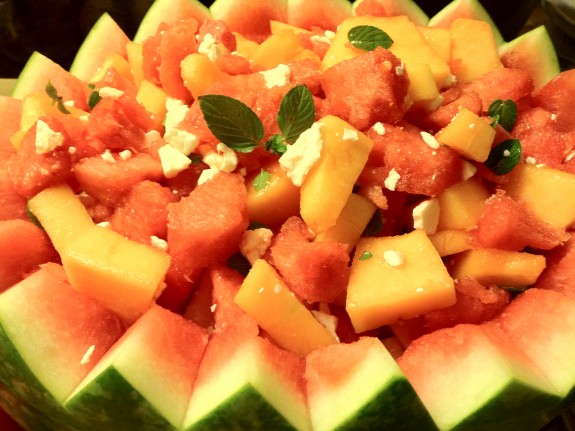
Sweet Summertime Melon Chunks with Crumbled Feta and Fresh Mint (from “Diet Simple Farm to Table Recipes”)
Excerpted from “Diet Simple Farm to Table Recipes: 50 New Reasons to Cook in Season!“
It’s melon season and a vast number of varieties are now available, and will be for quite a while. These days melons come in an amazing array of colors, shapes, textures, and flavors. Use a combination of any melons for this very simple, yet elegant recipe. This is an unusual combination of flavors and textures, and a delight on the palate. Use any kind of melon that happens to be in season.
Serves 8
2 pounds melon chunks (about 1 small cantaloupe or seedless watermelon)
½ pound Feta Cheese or other similar cheese
8 small mint leaves, Chiffonade (Basil will also work)
Combine ingredients in a large bowl and serve!
I’m In Tomato Heaven Recipe! Greek Salad with Heirloom Tomatoes
I’m in tomato heaven! Tomatoes are my favorite vegetable (maybe because they’re actually a fruit!). It all started with my Grandmother. She would plant dozens – or it seemed like dozens to a child – of tomato plants every year in her huge vegetable garden. We’d pick them ripe from the vine, and eat them while still warm from the summer sun. I’ll never forget how soft, juicy, and red throughout they were. I feel so lucky that today, we have our Farmers Markets growing these kinds of spectacular specimens… of all shapes, sizes, colors, textures, and flavors!
Heirloom tomatoes are old varieties of tomatoes which have been passed down through generations. They are tastier, but more delicate, because they’re bred to be picked and eaten right away – they’re not bred to travel (as many of the tomatoes in the grocery store may be). Heirloom varieties have natural resistance to pests, disease and are better able to tolerate local conditions without too much extra energy, pesticides or water. Locally, organically produced food saves water, energy and encourages a region’s unique varieties of fruits and vegetables.
Greek Salad with Heirloom Tomatoes
excerpted from “Diet Simple Farm to Table Recipes: 50 New Reasons to Cook in Season!” by ME (only $4.95)
Serves 8
Ingredients:
Vinaigrette:
2 Tablespoons Freshly Harvested Extra Virgin Olive Oil
2 Tablespoons Freshly Squeezed Lemon Juice (1 Lemon)
1 Tablespoon Chopped Fresh Oregano or Basil (or 1 tsp dried)
1 Clove Garlic, Minced (optional)
Salt and Pepper to Taste (Salt is not necessary with the cheese and olives)
Vegetables:
2 cucumbers, peeled, seeded and sliced into a half-moon shape
1 onion, peeled and chopped coarsely
1 medium yellow, purple or green bell pepper, cored, seeded, chopped into large bite-size pieces
1 cup pitted Kalamata or other Greek Olives
4 Heirloom Tomatoes, quartered, and cut into large, bite-size pieces (or any vine-ripe tomatoes)
4 ounces Feta or Goat Cheese, broken into small bits
Instructions:
Combine the vinaigrette ingredients in a large salad bowl and whisk until blended. Add the cucumbers, onion, pepper, and olives and toss into vinaigrette. Let sit for twenty minutes to marinate. Add the heirloom tomatoes and cheese when ready to serve.
Tomatoes are one of the “superfoods.” Men who consumed 10 or more servings of tomato products a week had a 35% decrease in risk of prostate cancer relative to those who consumed 1.5 servings or fewer per week. This is largely attributed to “lycopene” in the tomatoes, which is also in other red fruits such as watermelon, pink grapefruit and guava. Men with lycopene levels in the top 20% had a 46% decrease in risk of heart attack compared to those in the bottom 20%. Lycopene is a potent scavenger of gene-damaging free radicals. But don’t expect to get it from a supplement. You must eat the tomato as you need the whole food to receive the benefits! But because lycopene is fat-soluble, you must eat the tomato with an oil of some kind for it to be available to your body.
Lycopene (Red fruits such as tomatoes, watermelon, guava): Many studies have shown that lycopene-rich foods reduce the risk of prostate cancer, but the mechanism behind that reduction was not well understood until now. A recent study found that lycopene has a substantial protective effect against prostate cancer by interfering with the genes that would allow the prostate cancer cells to grow and survive. The American Institute for Cancer Research recommends that men take advantage of lycopene’s cancer-preventing effects and fill their diets with foods such as tomatoes, watermelon and guava.
Katherine’s Mantra for Transforming Your Life: Never Give In!
- At July 10, 2017
- By Katherine
- In Articles, News
 0
0
Thank you for writing me with your well wishes over the past few weeks. Your responses to my articles documenting my recent personal challenges have been heart-warming. I’ve especially enjoyed hearing your stories – many of you my clients – of how the skills I’m sharing in these pages are ones that have helped you maintain your healthy and happy lives. During my (25+ year) career, I’ve felt privileged to hear about your own life challenges through which you are working.
People look at my life and think it’s easy for me, and sometimes even tell me I couldn’t possibly relate to them or help them. I’m writing my story to disabuse you of that notion. Though, my clients very quickly perceive how similar my life has been to theirs, and understand why I’m so empathetic with their concerns.
“I’m no sacrosanct preacher looking down at a congregation of sinners. I’ve been there … And I know what it takes to come back from those depths of despair – and to stay on top!” I said in my book, Diet Simple. And I’d like to demonstrate how you can do the same, like my clients have, through the many years I’ve served them, and continue to do so.
I’ve been documenting my life’s recent transformation because I believe the steps I’m taking are relevant to anyone who wants to change their lives for the better. Everyone goes through hard times, and one of the most difficult, yet important skills for maintaining a healthy and happy lifestyle, is recovering from set backs.
One of my mantras through the years that I borrowed from Winston Churchill has been, “If you’re going through Hell, keep going … Never give in, never give in, never, never, never!” It is not always easy, including for me. That’s because we’re human and imperfect. But I firmly believe that we must live by this philosophy when it comes to doing good in the world or for ourselves.
In fact, studies of successful weight loss maintainers found that one of the differences between people who lose weight and keep it off versus those who relapse and gain their weight back is recovering from slips, instead of allowing them to snowball; seeing “mistakes” as normal, being kind to oneself, and getting over them.
My best case study demonstrating how powerful your response to slips can be is of Melissa, who spent many years struggling with her health and her weight. Today, Melissa is 50 pounds lighter than when we first started working together, maybe 15 years ago, and she’s kept it off for the past five years. But her journey was not an easy one. Melissa has insulin-dependent diabetes and was sent to me by her doctor to lose weight and improve her health. She desperately wanted to lose weight. She was 5’5″ tall, and slowly gained weight through her adult life until she weighed 200 pounds. She and her doctor wanted her to weigh under 150.
Like many people in Wahington, DC, Melissa is a highly educated, hard-working professional. She successfully directs a non-profit organization helping abused children. You could say Melissa – and her husband, John – are “workaholics.” They live for their work.
For at least ten years, Melissa would successfully change her habits and lose weight. Sometimes 20, sometimes 30 pounds. She’d feel happy, healthy, on top of the world; she loved the way she looked. But inevitably, when she’d go through difficult times – perhaps a holiday, a stressful family event, or a challenging work situation – she would slip up. And of course, you’re thinking, that’s normal, right? Well, Melissa didn’t feel that way. Any deviation from what she thought she should be doing made her feel so terrible that she’d fall into a depression. She was a perfectionist; and hard on herself. She started cancelling appointments, and wouldn’t return my calls. She disappeared. I lost contact with her. She gave up, felt ashamed. I felt terrible.
But amazingly she’d come back within a year or two – or three, though unfortunately having gained some, if not all, of her weight back. I was always happy to see her and pleased she was trying again. After about three failed attempts, we had (another) serious heart-to-heart about her perfectionism. We discussed her “disappearances,” which always led to weight re-gain. We discovered they were related to a slip she was ashamed of, or a time her work load or family life got too busy. She promised to never lose contact again. She agreed that no matter how hard things got that we would work through it together, no matter what.
Many times during our sessions (often by phone because she was so busy), Melissa would feel down and want to give up. But she promised to get in touch the next day(s) and to keep our appointment the following week, even if she felt she didn’t do well. This time we worked together, she kept her promises. Over time, she got used to “slipping up” now and then; she started regarding her slips as normal… okay… to be expected… and sometimes even planned as “splurges” or “taking a break.” Melissa had to learn how to get through the tough times, to put up with being too busy or stressed, feeling unsuccessful, or not getting results. And eventually, she’d always bounce back.
I enjoy staying in contact with Melissa. She sends me photos of herself at a gala, or in a new fabulous outfit, so I can see she’s having fun and staying fit. I like to keep up with how she and John are doing, and appreciate her staying in touch.
You could say I have a rewarding job. I would agree with you! Now, if I could only be perfect… Hmmmm



